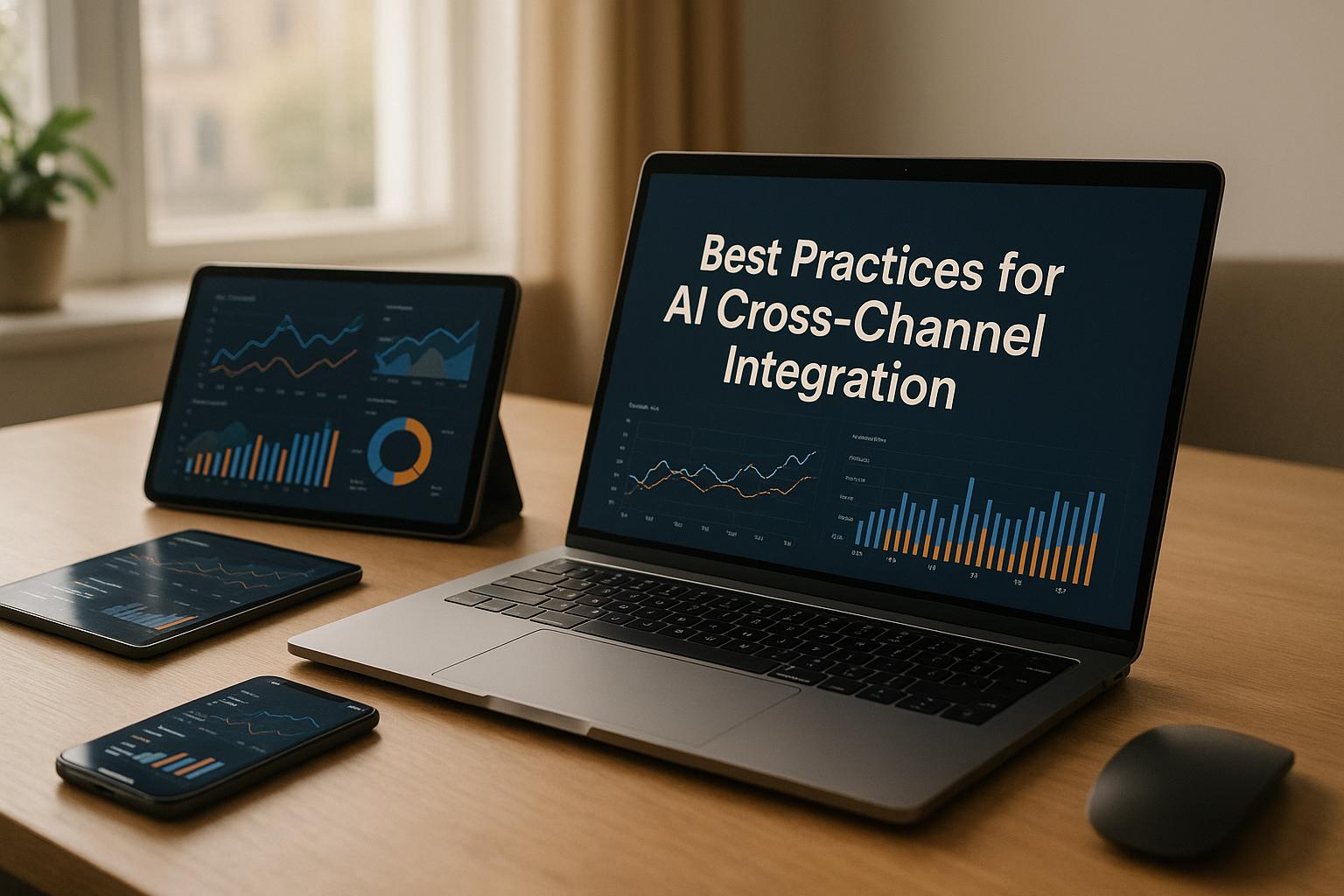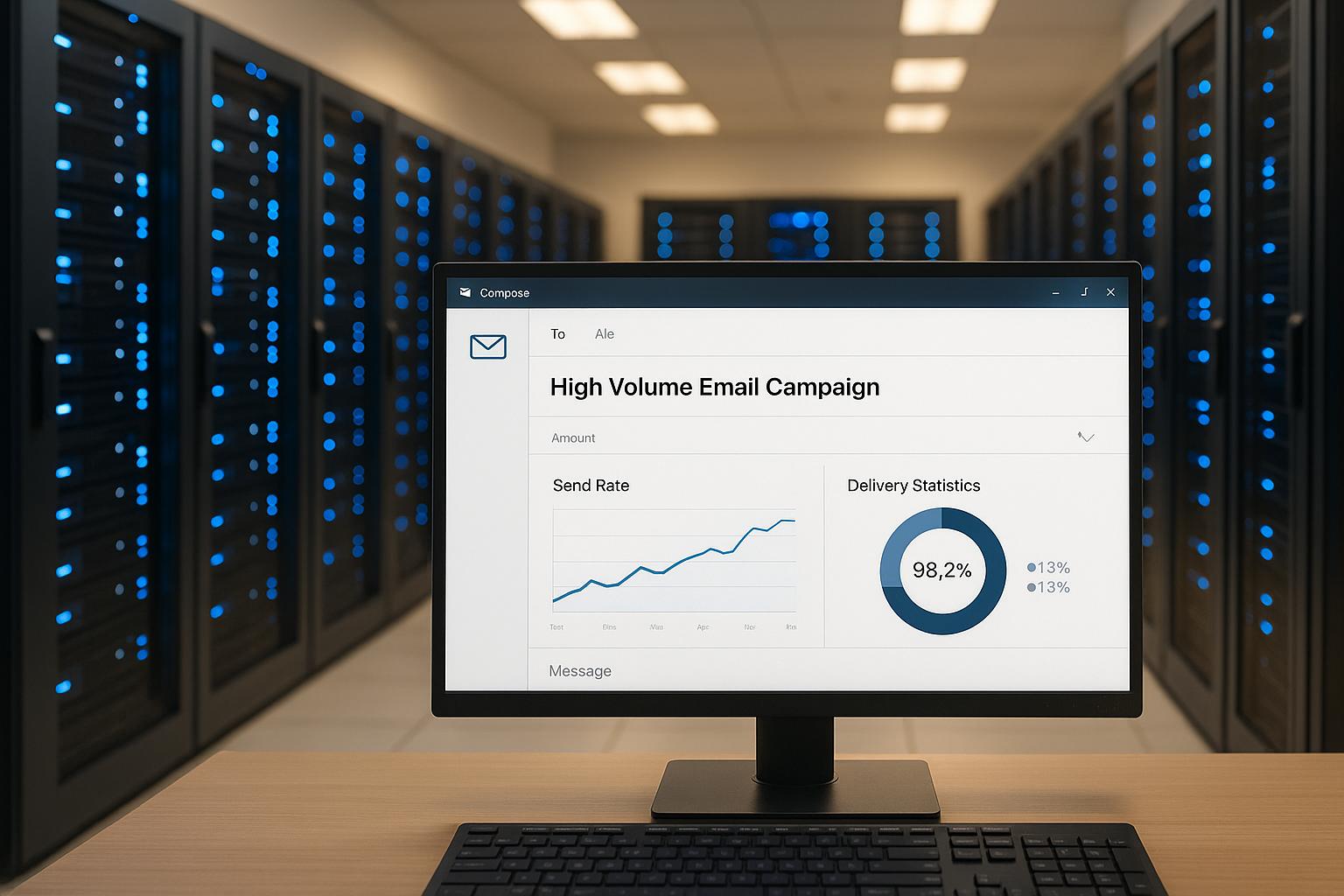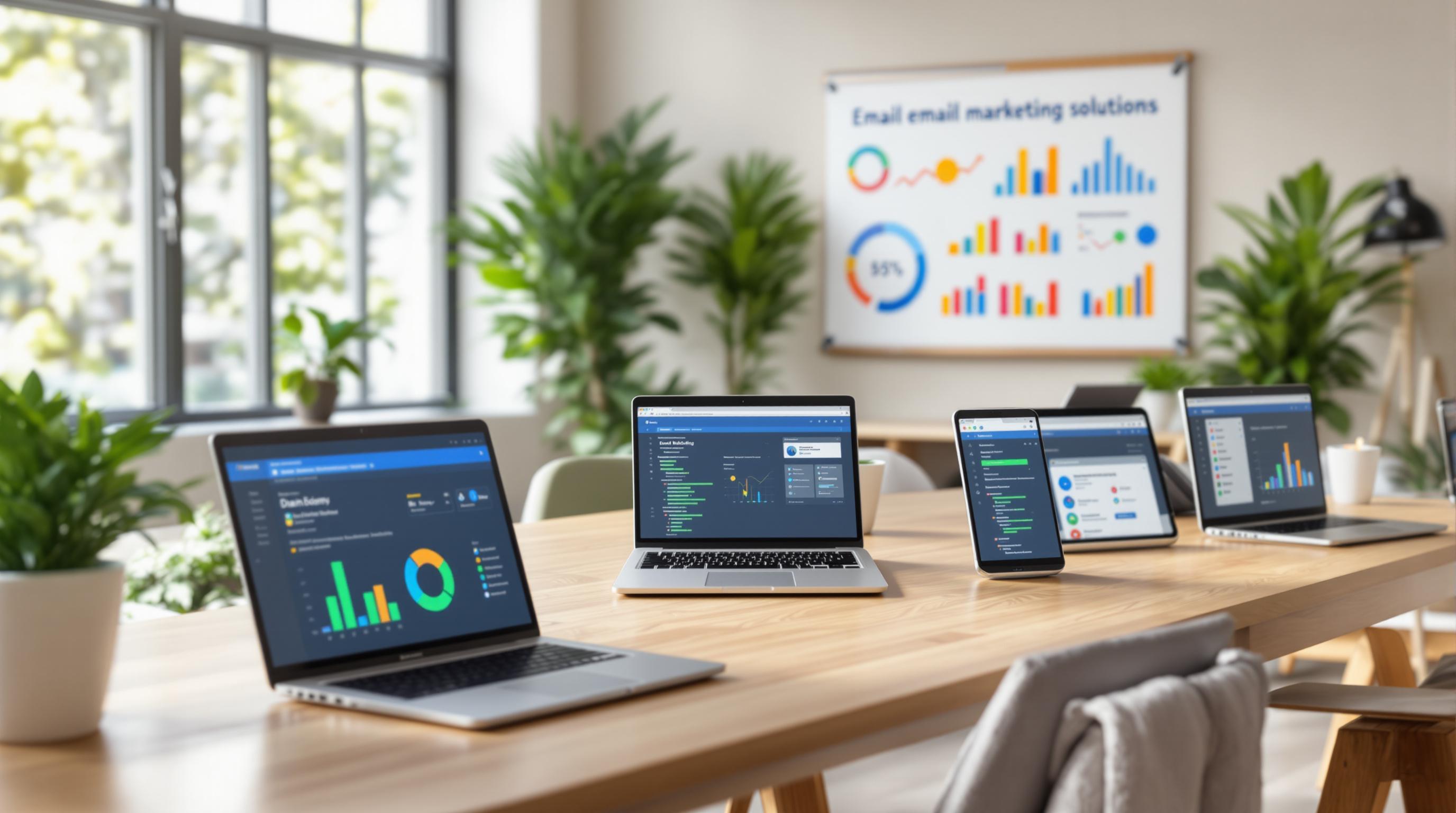Personalized emails work. By 2025, businesses using tailored content see better open rates, higher engagement, and improved ROI. Here's why personalization matters and how it works:
- Higher Open Rates: Emails with personalized subject lines grab attention.
- Better Engagement: Tailored content based on user behavior increases clicks.
- Stronger Customer Relationships: Relevant messages build trust and loyalty.
- Boosted Revenue: Companies like Spotify have seen millions in additional revenue by using advanced personalization tools.
Key Strategies:
- Use customer data like purchase history and browsing habits.
- Write subject lines that reference specific actions or preferences.
- Segment your audience based on behavior, demographics, and lifecycle stage.
Bottom Line: Personalization isn’t optional anymore. It’s the key to making your emails stand out and deliver results.
Email Personalization: Test & Improve Open Rates!
How Personalization Affects Open Rates
Emails that use customer behavior data, fine-tuned subject lines, and precise audience segmentation consistently see better open rates and engagement.
2025 Performance Data
In 2025, data showed that personalized email campaigns outperformed generic ones in key areas like open rates, click-through rates, and revenue per email. While these results differ across industries, using dynamic content and targeting based on customer behavior consistently led to stronger engagement and higher earnings per email. This trend matches what consumers now expect from their email interactions.
Customer Expectations
Today’s consumers want emails that align with their interests, past purchases, and preferred communication styles. They respond best to messages that reflect their buying history and behavior. To keep up with these expectations, businesses need to refine their email strategies and focus on delivering relevant, timely content.
Personalization Methods That Work
Using Customer Behavior Data
Tap into customer behavior data like purchase history, browsing habits, and engagement stats to create messages that feel personal and relevant. For example, if someone often looks at workout gear, you can recommend related items in your emails, increasing the chances they'll engage.
Here are some data points to focus on:
- Purchase history and frequency
- Website navigation habits
- Email interaction metrics
- Preferred product categories
- Average order value
Pair these insights with attention-grabbing subject lines to make your emails even more effective.
Subject Line Techniques
Personalized subject lines are a game-changer for grabbing attention. By using specific details that matter to your audience, you can boost open rates and engagement.
Try these approaches:
- Refer to recent purchases
- Mention products they've browsed
- Highlight recommendations based on their behavior
For example, a subject line like, "Sarah, the resistance bands you checked out are back in stock!" combines personalization with a sense of urgency.
Customer List Segmentation
Segmentation helps target the right audience with the right message. By combining various data points, you can create highly specific groups that make your emails more relevant and effective.
Here are some common segmentation strategies:
| Segmentation Type | Data Points | Example Use |
|---|---|---|
| Behavioral | Purchase history, browsing activity, email engagement | Reward loyal shoppers with early access |
| Demographic | Age, location, gender, income | Tailor offers to specific age groups or regions |
| Lifecycle Stage | New subscriber, active customer, inactive customer | Send win-back campaigns to re-engage lapsed users |
| Value-Based | Average spend, lifetime value | Promote premium products to high-spenders |
Keep your data clean and up-to-date, and adjust your segments based on how they perform. Start with broader groups and refine them as you gather more insights.
sbb-itb-6e7333f
Measuring Personalization Results
Click and Conversion Rates
Personalized campaigns often lead to better engagement and higher conversions by tailoring messages based on customer behavior. Metrics like click-through rates (CTR) show noticeable improvements depending on the industry and the specific personalization approach. Techniques such as using personalized names, behavioral triggers, product suggestions, and location-based content can make a big difference in CTR. Let's also consider how personalization influences long-term customer connections.
Customer Retention Metrics
Here are some key metrics to track:
- Subscriber Lifetime: How long subscribers stay engaged with your content.
- Engagement Duration: The amount of time users spend interacting with personalized emails.
- Opt-out Rate Changes: Patterns in unsubscribe rates after introducing personalized strategies.
These metrics help businesses understand how personalized emails contribute to building customer loyalty over time. Strong retention can lead to meaningful financial benefits.
Financial Returns
Important financial metrics to evaluate include:
- Revenue per Email: Comparing earnings from personalized emails versus generic ones.
- Customer Lifetime Value: The long-term financial impact of providing tailored content.
- Campaign ROI: The return on investments in personalization tools and data analysis.
While implementing advanced personalization requires resources, the resulting boost in engagement, conversions, and revenue makes it worthwhile. Tracking these metrics demonstrates how personalization improves overall campaign performance.
Common Issues and Solutions
While personalization can boost engagement, tackling its challenges is just as important.
Data Management
Good data management is the backbone of email personalization. But issues like outdated information, disconnected systems, and strict privacy regulations can get in the way. Here’s how to address them:
- Data Quality: Regularly clean your database to remove duplicates and update old entries.
- Integration: Use customer data platforms that sync effortlessly with your email marketing tools.
- Privacy Compliance: Set up clear consent processes, follow data handling rules, and offer easy opt-out options.
Setting Personalization Limits
It’s important to find the right balance between personalization and respecting privacy.
| Personalization Level | Advantages | Possible Drawbacks |
|---|---|---|
| Basic (e.g., Name, Company) | Safe and broadly accepted | Limited impact on engagement |
| Behavioral (e.g., Purchase History) | Drives higher engagement | Can feel invasive |
| Predictive (e.g., AI-driven insights) | Maximizes performance | Raises privacy concerns |
Start with simple personalization and gradually add complexity based on how customers respond. Keep an eye on unsubscribe rates and feedback to ensure your efforts align with what your audience wants. This approach helps build trust while boosting engagement.
Key Success Factors
Several elements are critical to making email personalization work:
- Mobile Optimization: Use responsive design to ensure personalized emails look great on any device.
- AI Implementation: Leverage AI to analyze behavior, predict the best send times, suggest content, and automate audience segmentation.
- List Maintenance: Regularly refresh your email list by removing inactive contacts, updating information, and segmenting based on engagement levels.
Conclusion
Email personalization continues to deliver higher open rates as we approach 2025. Data shows that tailored emails consistently outperform generic ones, with segmented and customized campaigns driving better engagement.
Personalization strategies - ranging from adding a recipient's name to using advanced behavioral insights - help create stronger connections and achieve better outcomes. To make the most of this, businesses need to invest in the right tools.
Choosing the Right Tools
Selecting the right email platform is essential. The best tools combine powerful segmentation, automation features, secure data handling, and detailed analytics to support effective personalization.
The Email Service Business Directory is a useful resource for comparing email marketing platforms. It helps businesses find tools that align with their needs, whether they require basic customer data integration or more advanced content personalization.
When assessing platforms, prioritize these capabilities:
| Feature Category | Key Features |
|---|---|
| Data Management | Ensures clean lists, precise segmentation, and regulatory compliance |
| Automation | Offers behavioral triggers, dynamic content, and smart scheduling options |
| Analytics | Tracks open rates, supports A/B testing, and provides performance insights |
| Integration | Includes CRM compatibility, API access, and third-party tool support |
Combining the right technology with a solid strategy allows businesses to enhance their email marketing efforts. This approach not only boosts performance but also helps build lasting relationships with customers.


